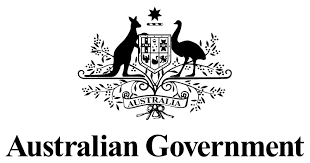You have no items in your cart. Want to get some nice things?
Should I Include a Cover Letter Along with My Resume?

When it comes to applying for a job, the resume has long been considered the essential document to showcase one’s qualifications and work experience. However, the role of the cover letter in the job application process has been a subject of debate among job seekers. Some argue that cover letters are outdated and unnecessary, while others believe they offer a valuable opportunity to stand out from the competition. In this blog, we will explore the importance of including a cover letter along with your resume and discuss why it can be a beneficial addition to your job application.
Personalise Your Application;
One of the key advantages of including a cover letter is the ability to personalise your application for a specific job. While resumes provide a comprehensive overview of your skills and prior experiences, cover letters allow you to explain how your qualifications align with the requirements of the position and why you are interested in the company. It provides a chance to demonstrate your genuine interest and enthusiasm, which can make a lasting impression on the hiring manager.
Highlight Relevant Experiences;
Resumes often follow a standard format, listing your work history, education, and skills. However, a cover letter provides an opportunity to delve deeper into your experiences and highlight specific accomplishments that are relevant to the job you’re applying for. You can elaborate on recent projects you’ve completed, current challenges you’ve overcome, and the impact you’ve made in previous roles. This additional context can help employers gauge your suitability for the position and distinguish you from other candidates.
Showcase Your Communication Skills;
Strong written communication skills are highly valued in many professions. By submitting a well-crafted cover letter, you can showcase your ability to articulate your thoughts, organise information effectively, and communicate professionally. Employers often use cover letters as a measure of an applicant’s writing skills and attention to detail, which are essential qualities in a wide variety of roles. A compelling cover letter can leave a lasting impression and increase your chances of getting noticed.
Address Potential Concerns;
A cover letter is also a useful tool to address any potential concerns that may arise from reviewing your resume. For example, if you’re changing careers or have gaps in your employment history, you can use the cover letter to explain these circumstances in a positive light. It allows you to proactively address any red flags and provide additional context that may help the employer better understand your qualifications and potential fit within the organisation. It is also your chance to include a call to action and ask them to contact you for further information, or invite you to an interview.
Demonstrate Professionalism and Initiative;
Including a cover letter with your resume demonstrates professionalism and initiative. It shows that you’ve taken the time and effort to craft a tailored application, rather than simply submitting a generic resume. This level of dedication and attention to detail can give you a competitive edge and indicate to potential employers that you are genuinely interested in this particular position. In a competitive job market, going the extra mile with a well-written cover letter can help you stand out from other applicants.
While the resume remains a vital component of any job application, including a well-crafted cover letter can significantly enhance your chances of securing an interview. It allows you to distinguish your application, highlight relevant experiences, demonstrate strong communication skills, address potential concerns, and showcase your professionalism.
Remember, a cover letter should be concise, engaging, and tailored to the specific job you’re applying for. By taking the time to write a compelling cover letter, you can make a positive impression on potential employers and increase your chances of success in the competitive job market.




